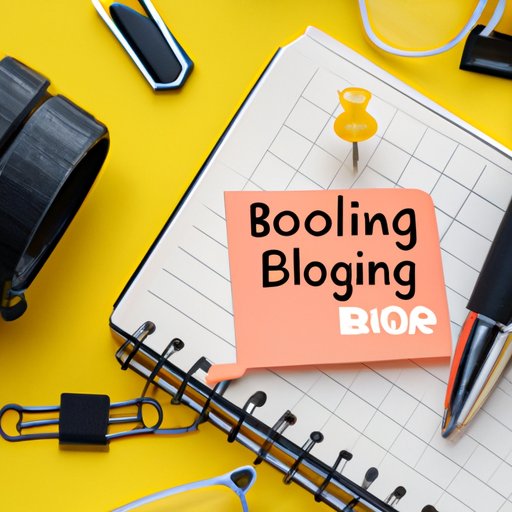Introduction
Writing a blog is one of the best ways to communicate your ideas and perspectives with a wider audience. However, many people find it challenging to write a blog that stands out from the rest. The purpose of this article is to provide you with a step-by-step guide to writing and publishing successful blog content.
A Step-by-Step Guide to Writing a Successful Blog
Before we start, let’s define what a successful blog is and why it matters. A successful blog is informative, engaging, and able to reach and connect with its target audience. It can establish the writer as an authority in their field and boost website traffic and conversions.
The process of creating a blog can be broken down into simple steps, including brainstorming, outlining, writing, editing, and publishing. Each of these steps contributes to the overall quality of the content, making it more interesting, informative, and engaging for your readers.
Firstly, brainstorming helps you to identify topics that are relevant to your audience and can generate interest. Outlining your blog content will provide a direction and help you organize your thoughts. Writing your blog is the core step that requires careful scripting, while editing helps to refine the content, grammar and overall readability. The final step is publishing, which involves sharing your blog for the world to read.
The Anatomy of A Blog Post
The anatomy of a blog post consists of four main components; the headline, introduction, body, and conclusion. The headline is essential because it’s the first thing the reader sees, and it can make or break their interest in reading further. A well-written introduction will engage the reader and encourage them to keep reading. The body should be well-structured, informative, and include relevant keywords. Finally, the conclusion should summarize the main points of the blog content and leave a lasting impression on the reader.
To create a compelling title, use action words, numbers, and keywords. Write an engaging introduction that hooks the reader. Your body should be well-written and structured to deliver the information clearly. Your conclusion should be well-written and provide a clear call-to-action. Ensure to balance text with visual elements such as images, videos, and infographics to enhance the overall reading experience.
Spice Up Your Content
To make your content more interesting, try incorporating storytelling, personal anecdotes, humor, and varying sentence structures. Including multimedia elements like images, videos, and podcasts can engage the audience and increase the time they spend on your blog. You can also use these multimedia elements to enhance your brand message, evoke emotions, and establish rapport with your readers.
SEO for Bloggers
Search Engine Optimization (SEO) is the practice of increasing the quantity and quality of traffic to your website through organic search engine results. To optimize your blog for search engines, identify relevant keywords related to your blog content, include internal and external links, write descriptive meta descriptions, and use tags. Remember that overuse of keywords may result in a penalty by search engines, so ensure to use them naturally and sparingly.
Writing for a Purpose
To excel at writing blogs, you need to write with a clear purpose. Define your goals and write to meet them. Examples of goals include increasing traffic, generating leads, building online recognition, and creating a community. Use metrics and analytics to track progress towards these goals and make necessary adjustments along the way.
Conclusion
To develop successful blog content, you must write with a purpose and follow an efficient writing process. Remember to focus on delivering engaging, informative, and visually appealing content. Keep the tips and techniques shared in this article in mind, and you will be well on your way to becoming a successful blogger with a loyal readership.
